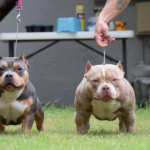Cats and dogs, with their unique individualities, are undoubtedly two of the most popular pets worldwide. Despite the vast commonalities in being our cherished companions, they exhibit pronounced differences in various spheres, including their reproductive biology. This article will take you on an insightful journey into the basics of cat and dog reproduction and will also tackle a frequent and rather intriguing query can a dog get a cat pregnant?
The Feline Reproductive Cycle: A Unique Process
Cats, or more technically, queens, are seasonal breeders. Their reproductive activity is typically triggered by the changing lengths of daylight throughout the year, peaking during the warmer, longer days. Interestingly, felines follow an induced ovulation process, meaning ovulation is triggered by mating, not by a standard heat cycle.
Sexual maturity in queens usually occurs around six months, although this timeline can vary among different breeds. Signs of a queen in heat can range from increased affection to excessive vocalization and marking. Unmated queens can go through several heat cycles during a breeding season.
Following successful mating and fertilization, the gestation period in cats averages between 63 to 69 days. A queen can give birth to one to eight kittens, with the average litter size hovering around four to six. Born blind and deaf, kittens depend entirely on their mother for the first few weeks of life.
Canine Reproduction: A Regular Cycle
In contrast to feline counterparts, dogs, or bitches, are not confined to seasonal breeding and can mate once they reach sexual maturity. Unlike cats, dogs exhibit a more predictable reproductive cycle, typically going into heat or estrus twice a year.
Sexual maturity in bitches usually occurs around six to nine months of age, with smaller breeds often maturing faster than larger ones. Unlike felines, dogs’ ovulation is not induced by mating but occurs at a predictable point in their heat cycle.
The gestation period in dogs is quite similar to cats, hovering around 63 days. The number of puppies in a litter can vary significantly, ranging from one to twelve puppies, depending largely on the breed and size of the dog.
Dispelling the Myth:
A rather peculiar one stands out among pet owners’ many queries: “Can a dog get a cat pregnant?” Let’s address this once and for all. The definitive answer is no. Such an occurrence is biologically implausible due to the two species’ fundamental genetic structure and chromosome count differences. With 78 chromosomes in dogs and 38 in cats, the likelihood of successful cross-fertilization is non-existent. This exemplifies a widespread myth that, despite being shared often, holds no scientific grounding.
Breeding and Neutering: A Responsible Choice
Apart from understanding the reproductive systems of cats and dogs. Discussing the importance of responsible breeding and the role of spaying and neutering in controlling the pet population is crucial.
Irresponsible breeding can lead to a surplus of pets, many of which end up in shelters or streets. Millions of healthy and adoptable pets are euthanized yearly due to shelter overcrowding. Spaying (in females) and neutering (in males) are safe procedures that prevent unwanted litters and provide health benefits. These include preventing uterus infections, mammary gland tumors in female pets, and testicular and prostate issues in their male counterparts.
For those considering breeding their pets, it’s essential to understand the commitment involved. The breeding process should always prioritize the health and well-being of the pets involved. Prospective breeders should be well-versed in the genetic diseases common in their pets’ breeds and ensure that the parent animals are screened for these conditions to avoid passing them onto the offspring.
Behavioral Aspects of Reproduction
Reproductive cycles considerably shape the conduct of our feline and canine companions. For instance, female cats in heat may display amplified affection, vocalize excessively, and even spray to signal potential mates. Similarly, female dogs in heat may also exhibit shifts in behavior, such as restlessness, and attract increased attention from male dogs.
Opting for neutering can regulate some behavioral tendencies, like curtailing roaming tendencies in males and stopping female heat cycles. Nevertheless, it’s essential to understand that neutering isn’t a panacea for all behavioral issues. Other influential factors such as genetic predisposition and environmental surroundings, also play a significant role.
In Conclusion
To truly comprehend cat and dog reproduction, one must venture beyond just the biological mechanisms. It involves understanding the repercussions of breeding, appreciating the advantages of spaying and neutering, and acknowledging the behavioral modifications prompted by reproductive cycles. As caregivers of our pets, our foremost duty is to ensure their health and happiness. An integral part of this duty is thoroughly informing them about their reproductive health. Therefore, while the notion of dogs impregnating cats is a myth, there’s a plethora of intriguing and beneficial information to learn about our beloved pets’ reproduction.
- Can Cockatiels Eat Watermelon? Read Before You Feed - 18 September 2023
- 10 Best Brush for Bernese Mountain Dogs - 27 August 2023
- Can Bearded Dragons Eat Blackberries? - 18 August 2023
















